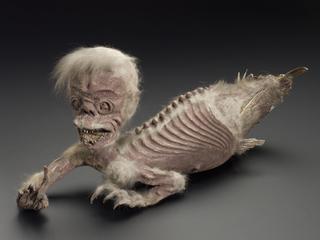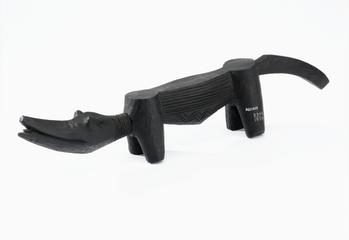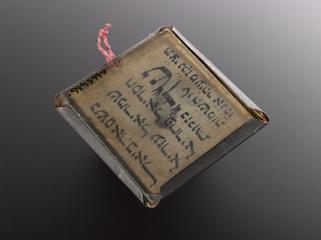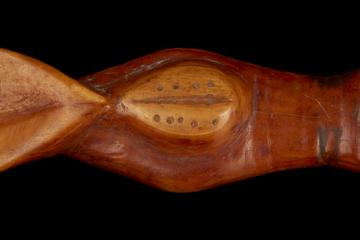




Rectangular blue cloth bag with woollen string, contains piece of turf used to protect against teething pains, Lovett collection, from South Devon, 1913
The growing influence of biomedicine in the 1800s did not necessarily replace established forms of treatment based on belief and superstition. What could be referred to as folk medicine – customs that often went back generations – continued to be practised. For example, some believed that if a piece of turf or grass was placed in a cloth bag under a teething child’s pillow at night it could help with pain and discomfort.
This amulet was a gift to the Wellcome collections in 1916 from Edward Lovett (1852-1933), a collector of British amulets and charms. It is pictured here with other teething amulets: a piece of flint (A132464), a necklace of woody nightshade (A132471), and a calf’s tooth (A665423).
Details
- Category:
- Ethnography and Folk Medicine
- Collection:
- Sir Henry Wellcome's Museum Collection
- Object Number:
- A132465
- Materials:
- cotton, material, turf, paper and wool
- Measurements:
-
overall: 31 mm x 110 mm x 33 mm, .002 kg
- type:
- amulet case
- credit:
- Lovett, E.R.




